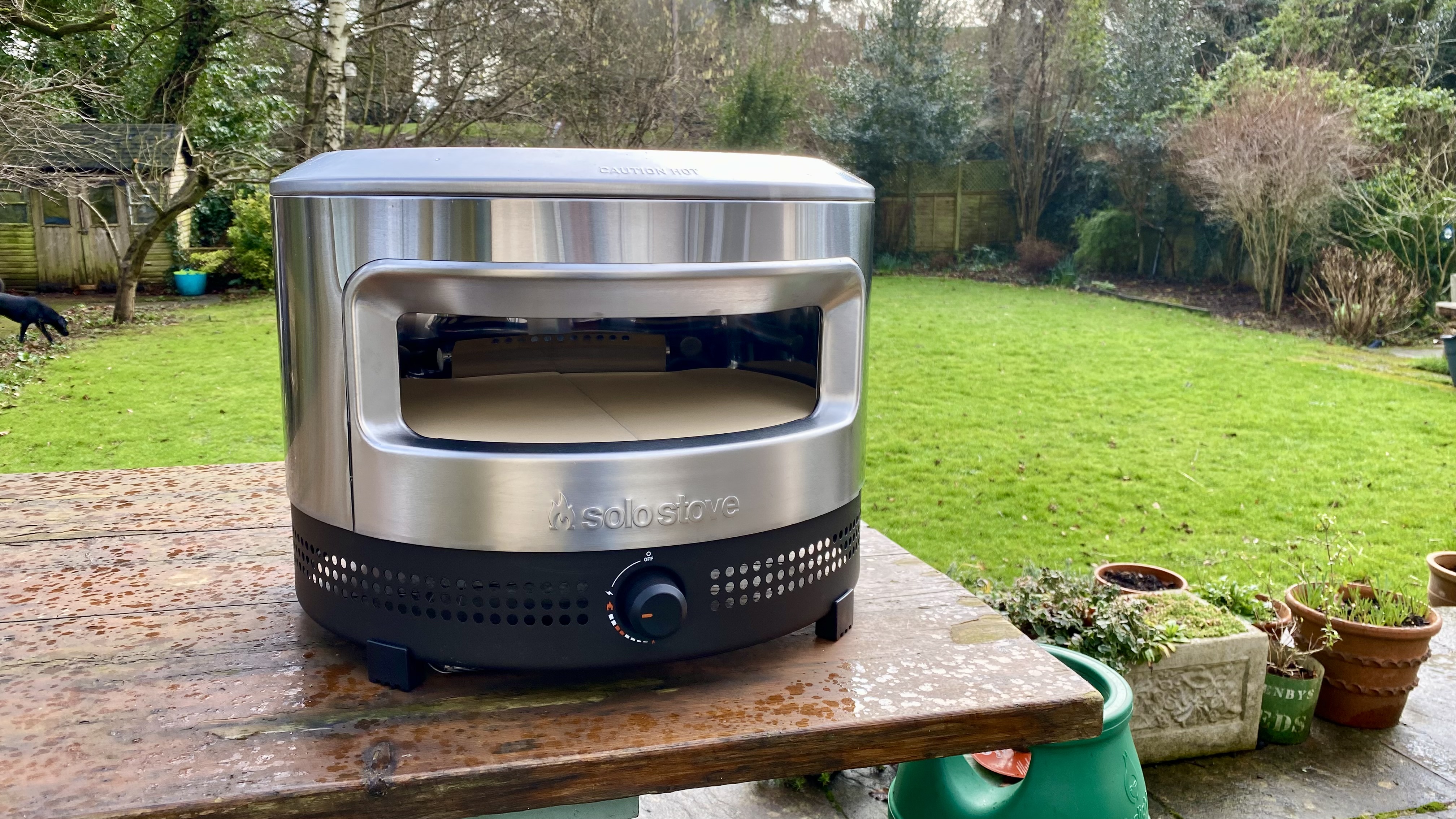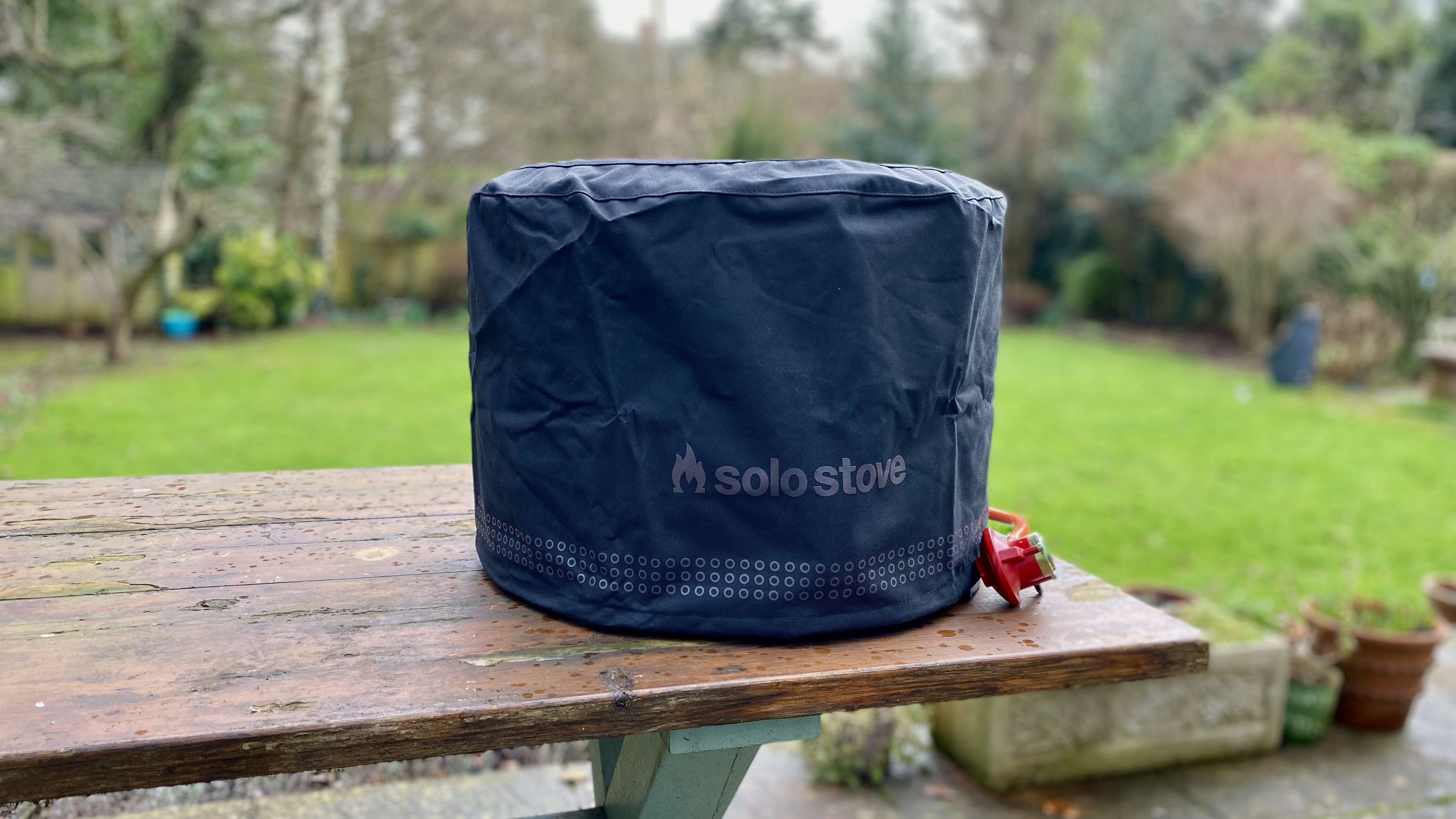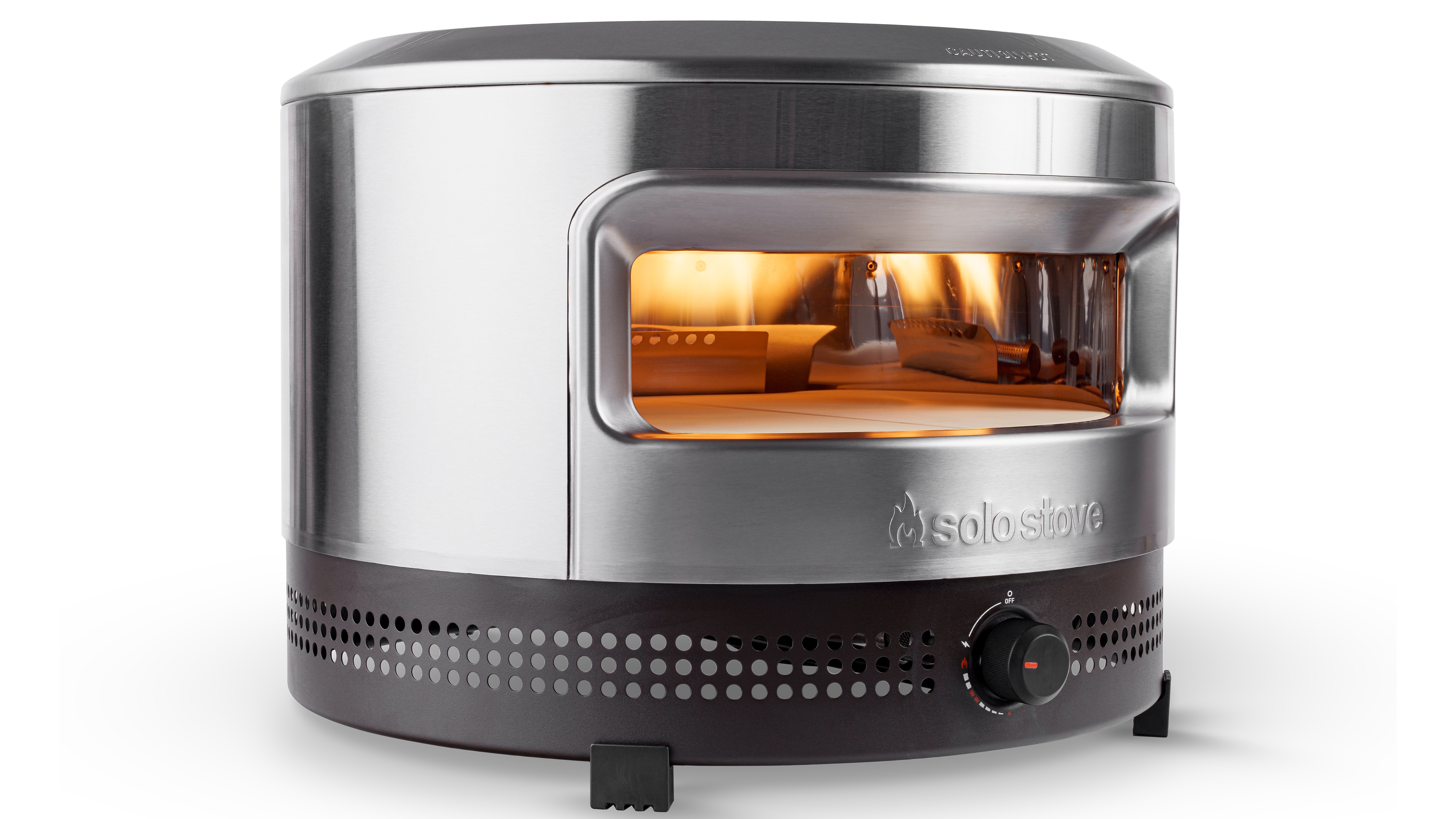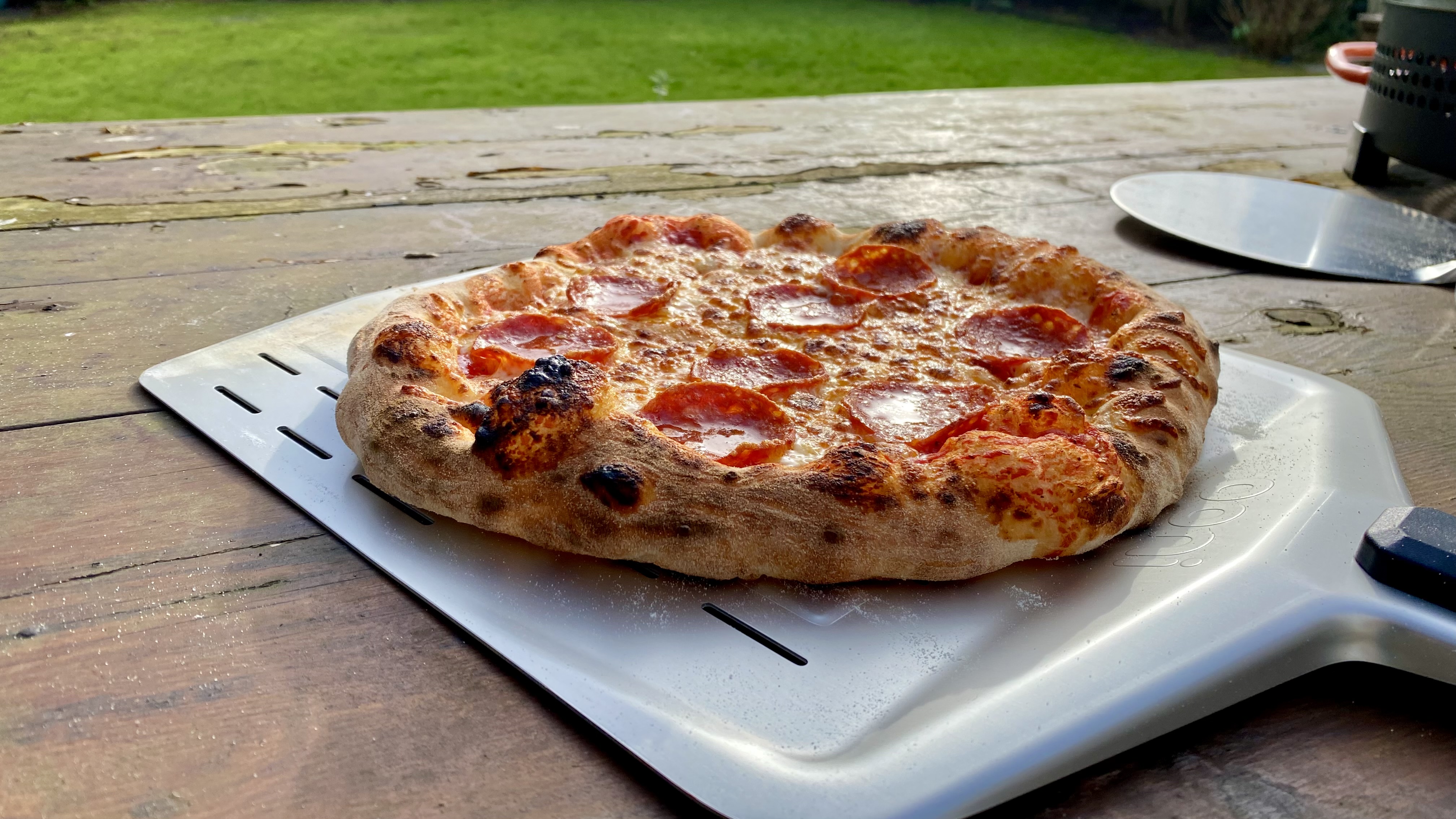Solo Stove Pi Prime review: a great-value gas-fired pizza oven for your patio table
Domestic pizza ovens don’t come much lighter than this


If you’re looking for a competent gas-fired pizza oven for less than £300, the Solo Stove Pi Prime is a fine contender. It’s a cinch to use, light enough to carry from patio to shed and it bakes 12-inch pizzas exceedingly well. However, its wide, gaping mouth does mean it can take a while to heat up to optimum temperature, especially in cooler, windier conditions.
-
+
Good performance
-
+
Easy to use
-
+
Light to carry
-
+
Keen price
-
-
Not small
-
-
Takes a while to heat up
Why you can trust T3

Welcome to T3's review of the new Solo Stove Pi Prime, a highly competent and very affordable gas-fired pizza oven for patio and balcony use.
I guess we really have Ooni to thank for the current explosion in domestic pizza ovens – just look at our ever expanding guide to the best pizza ovens for further proof. Before the first Ooni came on the market, the only way to make a freshly-baked pizza at home was by using an enormous self-built wood-fired brick igloo oven that took half a day to heat up.
Thankfully, today we get to bake using a variety of heat sources, whether it’s wood, electricity or, in this instance, the most popular method of all – gas. Moreover, the pizza ovens themselves have also reduced in size and some, like this Pi Prime, are actually light enough for one person to carry.
Let’s pop this stainless steel contender on the garden table, fire it up and see if it cuts the mustard.
Solo Stove Pi Prime: price and availability
The Solo Stove Pi Prime pizza oven retails at a reasonable £294.99 and is available directly from Solo Stove. However, if you prefer the authentic wood-fired method of baking pizzas, perhaps opt for its sibling, the Solo Stove Pi Pizza Oven (£349.99) instead.
Solo Stove Pi Prime review: design and features

Solo Stove cut its teeth on a range of stylish stainless steel fire pits and you can read about one of them in our review of the cockle-warming Solo Stove Bonfire 2.0. Recently the Texas-based company made its first foray into pizza land with the Pi Prime and overall, I’ve been very impressed with its shiny finish, its overall build quality and, above all, its relatively low weight which makes it easy enough for a single person to lift without causing a hernia.
Cast mostly from stainless steel, the Pi Prime adopts a circular shape that measures 53cm in diameter with space inside for two pieces of cordierite stone that amount to a full 13 inches of meal estate. It has a really wide mouth, too, which makes it easy to access the pizza when turning it. However the downside to this wide portal is that it takes longer for the oven heat up in cooler weather.
Get all the latest news, reviews, deals and buying guides on gorgeous tech, home and active products from the T3 experts
Although you can hardly see any evidence of a gas flame when you look inside, this thing gets hot enough to bake a Neapolitan pizza in about 90 seconds. Like most gas pizza ovens, the Pi Prime uses a single burner and most of the heat it produces is ported towards the rear which means a lot of pizza turning is required. Everything is controlled via a single dial with built-in Piezo ignition. Once fired, you simply turn the dial to one of two orange marks for optimum temperature.

Very few pizza ovens come with their own cover but this one does
There are no fold-out legs on this model – instead you simply plant it on a decent sized table. That said, Solo Stove has also produced a Pizza Oven Cart (£220) and Pi Stand (£250) for those who don’t have a big enough table. The company also produces a wide range of accessories, including pizza peels and turners, a heat-resistant rubber mat that sits atop the Pi Prime and a handy laser thermometer.
One especially big bonus with this model is that it also ships with an excellent weatherproof cover that fits the Pi Prime like a sock. Big bonus points for this.
Solo Stove Pi Prime review: set-up

The Solo Stove Pi Prime uses a split stone system to make it easier to add and remove for occasional cleaning
The Solo Stove Pi Prime arrived in a huge box and everything was packed really well, with the two half pizza stones tucked safely beneath some polystyrene. This was one of the easiest pizza ovens to remove from the box, mostly because it’s exceptionally light while still providing half decent interior insulation.
All I had to do was add the split pizza stones and attach the gas regulator my sample arrived with in a separate package. Since there is no mention on the Solo Stove website of the gas regulator being provided, I would assume it doesn’t come with one. Hint: when fitting the regulator, run the end of the hose under really hot water to soften it, then add a small drop of washing up liquid around the lip of the hose. This will make it much easier to attach it to the regulator and the oven.
Solo Stove Pi Prime review: oven preparation

The manual said to preheat the oven to 700˚F (371˚C) and that it should take around 15 minutes. From my experience, any outdoor pizza oven without a door to keep the heat in takes much longer to reach optimum stone temperature in cooler weather. There’s not much problem on a hot summer’s day but it can take most pizza ovens in excess of 45 minutes for the stone to heat up on a winter's day. And that’s a lot of propane use before you even start baking.
Using the optional Solo Stove laser thermometer, during my test in 6˚C ambient temperature with no wind, the rear of the stone reached 195˚C in 10 minutes. After a further 10 minutes it had reached 280˚C. Still some way to go. I should point out at this juncture that the stone temperature at the rear of most gas-fired pizza ovens is usually much hotter than it is at the front. On this model there was a 20˚ - 30˚C difference mostly because the ambient temperature was very low. I would expect much more uniform stone temperatures during the height of summer.
After 30 minutes had elapsed, the rear of the stone read 325˚C. Getting there. Another 15 minutes later (45 minutes in total) and the stone had finally reached 360˚C which was just about good enough for the test.
Solo Stove Pi Prime review: the baking process

For my test I used my favourite pre-made pizza dough balls from Peddling Pizza which you can read about in my how to make pizza at home guide. I then added some bog-standard ingredients including grated mozzarella and Tesco pepperoni. In this instance I eschewed the extra fresh buffalo mozzarella I usually add for texture and aesthetics because, well, I forgot to buy it.
Once the rear of the stone had reached 360˚C, I turned the heat dial to a lower output and launched the pizza. I waited about 20 seconds before starting to turn the pizza at regular intervals of 10 to 15 seconds so the higher heat near the rear could properly cook the ingredients. Thankfully, Solo Stove provided its optional small circular turning peel to make the task much easier than if using a standard wide peel.
After about 90 seconds, I removed the pizza and, voila, it looked magnificent, with a huge airy circular crust, lots of leopard spots and properly cooked ingredients. Granted I would have preferred a tad more crisping of the base but I put that down to the lower ambient temperature that definitely affected the front third of the pizza stone.
Solo Stove Pi Prime review: performance

I’ve made a few mistakes with some pizza ovens including the fabulous Witt ETNA Rotante and, more recently, the excellent Ooni Volt 12, so I half expected an issue with the Pi Prime. Perhaps I followed the manufacturer’s instructions more meticulously this time but the final result was near perfect. However, since this oven’s opening is quite substantial and the outdoor temperature was around 6˚C, it did take a long time for the stone to heat up.
In hindsight, I should have left the oven to preheat for another 10 minutes (55 minutes in all) because the bottom crust could have been done a bit more. But time flies when baking pizza and, for this particular test, another 10 seconds on the stone would have annihilated the already slightly overdone toppings. I also needed to turn the pizza frequently during the bake – about every 10 seconds – but since the opening to the oven is so large I was able to turn the pizza more easily than on other models.
Solo Stove Pi Prime review: verdict

The Solo Stove Pi Prime is one of the better-value pizza ovens on the market right now. It’s easy to use, light enough for one person to carry and it comes with its own tight-fitting rain cover. Just be sure to get the stone properly up to temperature or you may find irregularities between the top and bottom of the pizza.
Derek (aka Delbert, Delvis, Delphinium, Delboy etc) specialises in home and outdoor wares, from coffee machines, white appliances and vacs to drones, garden gear and BBQs. He has been writing for more years than anyone can remember, starting at the legendary Time Out magazine – the original, London version – on a typewriter! He now writes for T3 between playing drums with his bandmates in Red Box (redboxmusic).
